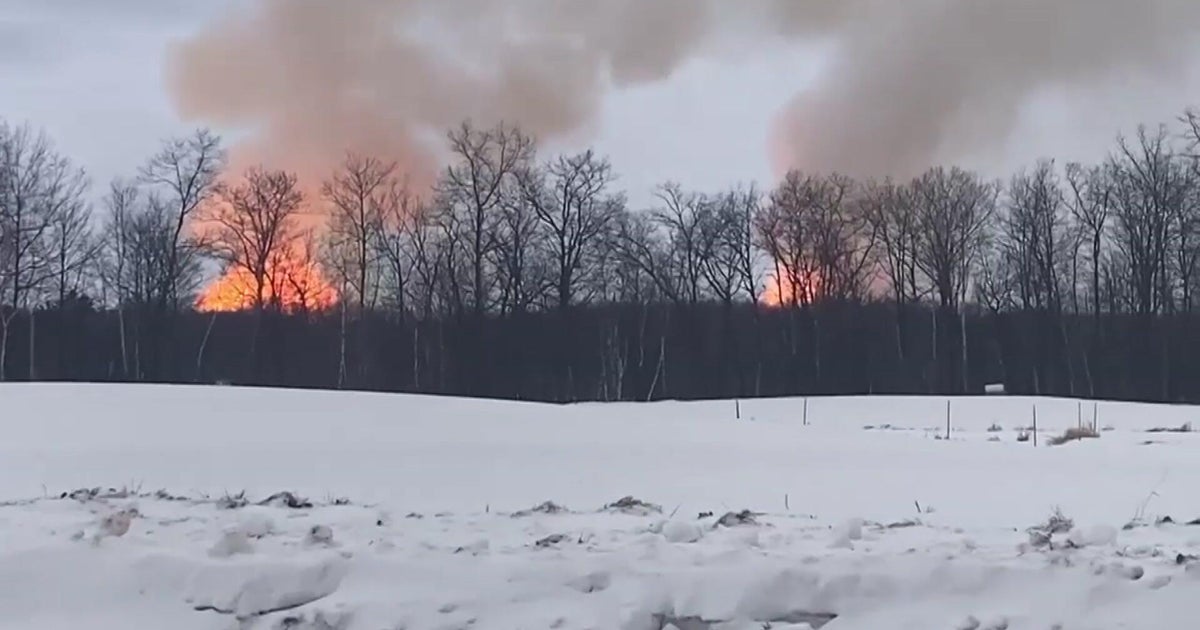Sun emits its largest X-class flare of the solar cycle as officials warn bursts from massive sunspot "not done yet"
The giant solar explosions of energy and light aren't over yet. Officials said on Tuesday that the sun just emitted another major solar flare – and that it's the strongest one so far in the current solar cycle.
The latest flare peaked just before 1 p.m. ET, NOAA's Space Weather Prediction Center said, with an X-class rating of X8.7. X-class solar flares are the strongest of solar flares, which are described by NASA as "giant explosions on the sun that send energy, light and high speed particles into space." The center said the flare was an R3 or "strong" flare, meaning it could have caused wide area blackouts of high-frequency radio communications for about an hour on the sunlit side of Earth. It also may have caused low-frequency navigation signal issues for the same period of time.
"Flares of this magnitude are not frequent," the center said in its update, also posting on social media, "Region 3664 not done yet!"
The flare came out of the sunspot dubbed 3664. That spot, combined with region 3663, makes up a cluster "much larger than Earth," NOAA said last week. And as of last Thursday, 3664 was only continuing "to grow and increase in magnetic complexity and has evolved into a higher threat of increased solar flare risk."
Two other flares – rated X1.7 and X1.2 – also erupted shortly before, although they were also not anticipated to be linked to any major impacts on Earth.
Despite the intensity of the flare, officials said there is not yet concern of a coronal mass ejection, or large burst of solar plasma and magnetic field. Those CMEs are what lead to geomagnetic storms like the rare extreme storm that occurred over the weekend, sending the northern lights to far lower latitudes than normal and causing chaos for GPS systems that farmers rely on at the height of planting season.
"Due to its location, any CME associated with this flare will likely not have any geomagnetic impacts on Earth," the Space Weather Prediction Center said.
Earth is currently in Solar Cycle 25, which began in 2020. The last cycle maintained an average length of 11 years and was the weakest solar cycle to occur in a century, the National Weather Service said. Although the current cycle has been forecast to be fairly weak and similar to the one prior, NOAA officials saw "a steady increase in sunspot activity" from the get-go.
"While we are not predicting a particularly active Solar Cycle 25, violent eruptions from the Sun can occur at any time," Doug Biesecker, a solar physicist at NOAA's Space Weather Prediction Center, said in 2020.





